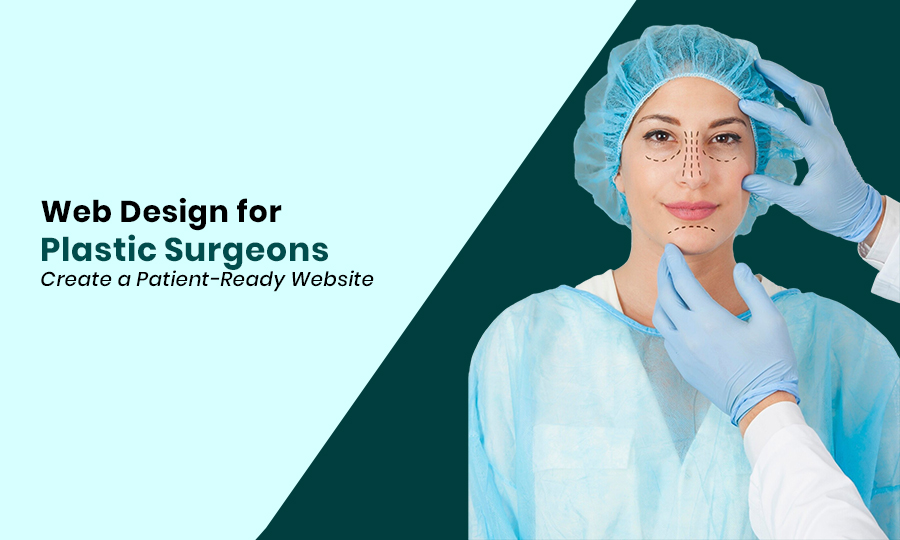In today’s digital era, more and more patients are turning to the internet to search for health-related information. In fact, 75% of customers judge a business’s credibility by its site design. A website is where your target patients first land and interact with your plastic surgery practice. In this case, developing a fast-loading website with seamless navigation is a must. This is where web design for plastic surgeons comes into play.
By designing a patient-ready plastic surgery website effectively, you can not only offer a better visitor experience but also keep your audience engaged, reducing bounce rates.
But how can you develop a website that is both aesthetically pleasing and highly functional, as well as patient-friendly? This blog will discuss some of the most effective strategies for how plastic surgeons can develop a high-converting website for their practice.
What is Web Design for Plastic Surgeons
Web design for plastic surgeons is the process of creating a professional and trustworthy online presence that not only attracts new patients but also makes them feel confident with their decision. This includes developing a clear, simple, and easy-to-navigate website with high-quality visuals, before and after photos, patient testimonials, and educational content on treatment procedures.
To enhance client experience and boost visibility of your plastic surgeon website, you can implement numerous features such as online appointment booking, contact forms, SEO optimization, and more. The main goal of your plastic surgery website must be to captivate, inform, and convert website visitors into loyal clients with an empathetic approach.
Why a Patient-Friendly Web Design Matters for Plastic Surgery Practices?
Developing a patient-friendly website is vital for plastic surgery practices as it will help establish authority, showcase professionalism, and convert website visitors into loyal patients.
A good website is the storefront of your plastic surgery practice, so you must make sure it looks captivating and professional at the same time.
Now that you know what website design is for plastic surgeons, let us discuss the importance of having a patient-friendly website in detail.
- Establishes Trust and Credibility
Individuals who are looking for plastic surgery practices would like to feel more confident in their surgeon’s skills and expertise. Developing a professional website with a simple layout and clear information about your certifications, qualifications, and patient testimonials can foster trust among patients even before they book a consultation.
- Let’s you Showcase your Work
Integrating before-and-after galleries in your plastic surgery website can be very helpful. These act as visual portfolios, allowing potential patients to witness real results. A well-designed gallery with high-resolution images and detailed descriptions can set you apart from other plastic surgery websites, helping you gain more attention.
- Drives More Client Queries
A website that is properly optimized for conversions can make it easier for website visitors to contact you. Clear call-to-actions (CTAs), easy-to-understand contact forms, and clickable phone numbers can make prospective patients take the next step.
- Improves Local Visibility
In today’s world, more and more patients prefer local practices rather than traveling around the world for a treatment. A website that is well-optimized for local search terms such as “best plastic surgeons near me” or “good plastic surgeons in Monaco” can help your plastic surgery website rank higher in the SERPs, making it easier for local clients to find your practice.
Steps to Develop an Effective Website for Plastic Surgeons
In case plastic surgeons fail to develop an effective web design, their online marketing efforts will go in vain. So, here’s a comprehensive step-by-step guide for plastic surgeons to develop a visitor-friendly web design.
- Leverage a Clear and Modern Website Design
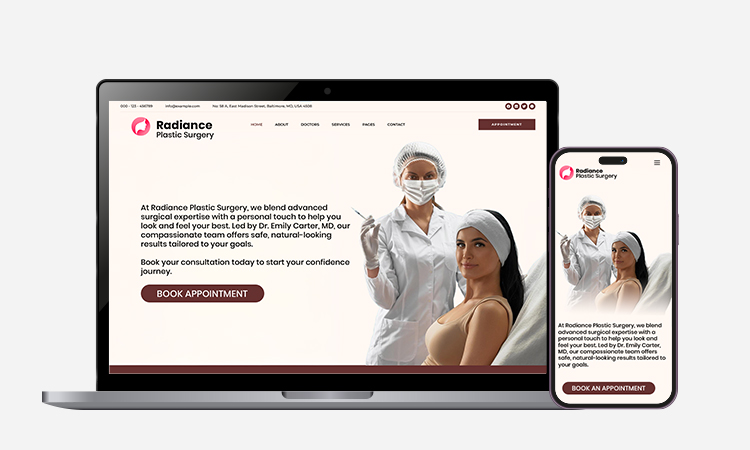
A plastic surgery practice must make sure to develop a website that is not only easy to use but is also engaging and highly functional. Every plastic surgery practice must include visual elements such as infographics, before-and-after photo galleries, and videos, such as patient testimonials, to attract more patients.
In order to attract individuals who are actively seeking plastic surgery services, plastic surgeons must use the right theme for their website.
- Aesthetic Appeal: Plastic surgeons must implement a professional, clear, and sophisticated design with a refined color scheme (e.g., soft blues, greys, and whites) that clearly conveys trust and clinical expertise. Plastic surgeons must make sure to avoid clutter or outdated details.
- Mobile Responsiveness: To ensure an effective web design for plastic surgeons, mobile responsiveness is crucial. Plastic surgeons must make sure your website is completely optimized and functions easily across all devices, including mobile phones and tablets, as 62.54% of global website traffic comes from mobile devices.
- Intuitive Navigation: Plastic surgeons must use clear and concise menu labels, e.g., procedures, before-and-after photos, and contact information to lessen the number of clicks required to reach crucial information.
- Fast Loading Time: By implementing reliable hosting, optimizing image size, and reducing scripts, plastic surgeons can ensure a fast-loading website, leading to lower bounce rates.
- Accessibility: By implementing accessibility best practices, such as the right colour contrast, alt text for images, and easy navigation to guarantee a client-friendly experience and comply with healthcare standards like ADA.
- Create an Interactive Homepage

The homepage is one of the most crucial pages of a website, as this is where your visitors first interact with your plastic surgery practice.
This is why, in order to create an exceptional website design, plastic surgeons must focus on developing a website that is not only captivating but also offers clear information about their business, products, and services.
To ensure an interactive homepage design, you must make sure to incorporate every crucial information, along with elements such as a tagline and logo of your plastic surgery practice and a clear CTA to encourage audiences to take a desired action.
Here are some of the vital characteristics of an interactive homepage:
- Clear and Engaging CTAs
- Certifications and awards
- High-Quality and 3D visuals
- User-Friendly Design
- Links to your social media platforms
- Patient Testimonials and Reviews
- Choose the Right Colour Theme
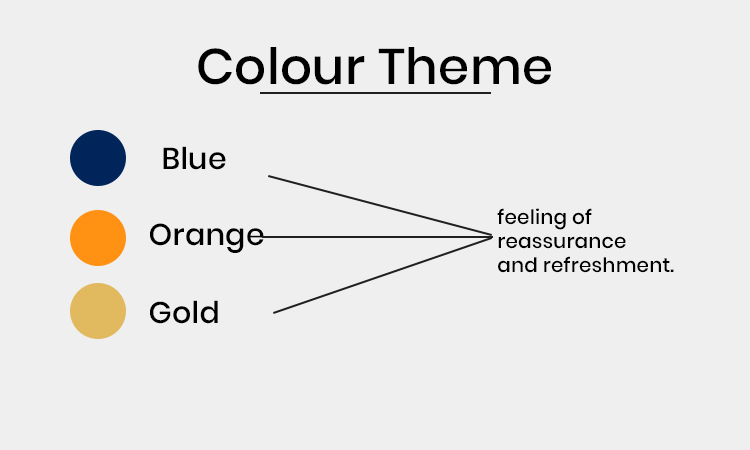
Do you know, nearly 40% of consumers appreciate colours the most out of all visual elements on business websites? So, considering the colour theme of your website is vital.
For plastic surgery websites, a combination of deep navy blue or charcoal gray with white can demonstrate authority. Furthermore, a proper balance of cool or warm tones, such as blue with hints of orange or gold, can provide a feeling of reassurance and refreshment.
Ultimately, choosing a palette that perfectly aligns with your brand’s specific needs can ensure high readability for crucial information. To give off a feeling of professionalism and expertise, plastic surgery practices can use writing fonts such as Georgia or Times New Roman.
These fonts can help build trust and convey tradition. On the other hand, leveraging fonts such as Open Sans can reflect a smooth yet modern aesthetic to your plastic surgery practice.
Best Colour Theme Tools for Effective Web Design for Plastic Surgeons:
- Adobe Colour: This is a versatile online tool that can allow plastic surgeons to create colour palettes from moods, colour rules, or even from an image.
- Coolers: It is a colour palette generator that can help plastic surgeons find the ideal colour combinations for their websites.
- HTML Colour Codes: This tool offers a technical colour palette that can help plastic surgery practices design their websites.
- Khroma: It is a free AI-powered web app that learns your preferences and generates infinite personalized palettes based on the colours you like.
- Use High-Quality Images and Videos
Visuals are crucial aspects of a website. In fact, 40% of users value images, and 21% consider videos. In your plastic surgery website, incorporating high-quality visuals can make all the difference.
By implementing visually appealing elements such as photos and videos on their website, plastic surgery practices can attract a broader audience. Plastic surgeons can leverage photos of their specialists, faculty, staff, and before-and-after photos of clients.
Furthermore, plastic surgery practices can upload informative videos, such as explaining a particular plastic surgery treatment, its process, benefits, and consequences, to educate patients and keep them engaged. Here are certain tools that chiropractic practices use to get high-quality images for their website.
- Canva: We all have heard this name once or twice, right? It is a popular graphic design platform where plastic surgeons can access free photos and video editors in just a single app. This app can be leveraged by plastic surgeons to edit photos and videos they wish to upload to their website.
- Pexels: This platform offers free, high-resolution, and copyright-free photos and videos that plastic surgery businesses can use on their website.
- Unsplash: This application contains more than 7 million high-quality free photos that plastic surgery practices can implement into their website.
- Adobe Premiere Pro: It is a professional video editing software that can help plastic surgeons to animate titles, mix sounds, edit videos, and add effects.
- Strategically Place CTAs
The last step to develop an effective web design for plastic surgeons is to strategically incorporate an interactive CTA to achieve higher patient engagement. Plastic surgery practices must implement CTAs such as “Call us today!” and “Book Now” to motivate clients to take action.
However, implementing CTA is not enough; you need to test it. So here are a few steps to A/B test CTAs.
- In the first step, you need to clearly define what you want to achieve.
- Based on data and client feedback, plastic surgeons must create a testable hypothesis. For example, “Changing the colour of the CTA button from blue to orange can enhance CTR as orange stands out more.”
- Plastic surgeons must develop two versions. The original (Control, Version A) and a modified version (variant, Version B). Make sure to use one at a time.
- Implement an A/B testing tool such as Optimizely to randomly divide your website traffic into two variations.
- Now you need to allow the test to run long enough to collect a statistically significant amount of data. Give time of least one or two weeks to interpret variations in patient behaviour across different days.
- Lastly, plastic surgeons must compare the metrics of the two variations.
- When the winner is identified, incorporate the version permanently.
Major CTA Elements to Test:
- Copy/Text: Example, “” Submit” Vs. “Book an appointment.”
- Colour and Design: Plastic surgeons must make sure their CTA button stands out with a solid and contrasting colour.
- Placement: Test by placing the CTA above or below the fold, or right in the middle of relevant content.
Here are certain CTA generating tools that plastic surgeons can consider:
- HubSpot: This is a CTA generator tool that allows plastic surgery practices to craft high-converting CTA buttons and pop-ups.
- Thrive Leads: Thrive Leads helps plastic surgery practices to develop engaging CTAs and generate high-quality leads.
- Unbounce: Unbounce is another CTA generator that helps plastic surgeons build dedicated landing pages with CTA optimization.
- Other Important Pages to Focus on
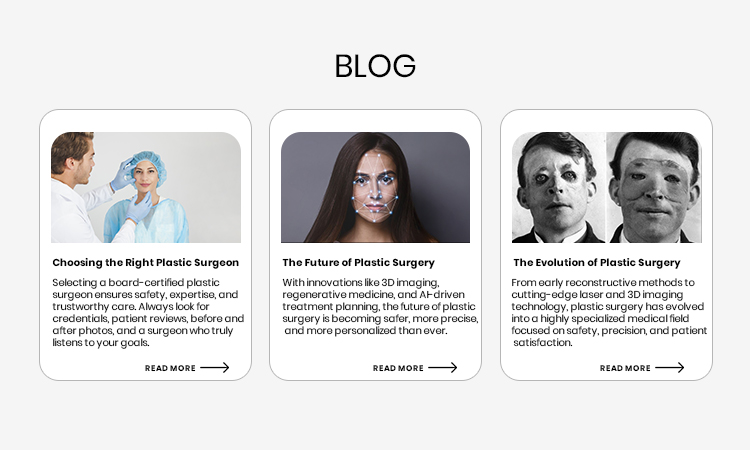
Here are some other vital pages that plastic surgery practices must focus on.
- About Us Page
An effective About Us page must contain the years of expertise, history, and mission of your plastic surgery practice. It should also contain the team of your plastic surgery clinic, along with their name and degrees, and clear service descriptions of your plastic surgery practice.
This is crucial to building trust among the target audience. The About Us page must contain every little detail of your plastic surgery practice which are important to add in order to make your website more credible.
- Contact Page
This is another vital page of a website that plastic surgeons cannot afford to ignore, as it contains relevant business information. Plastic surgery practices must make sure to create a contact page with a seamless layout, along with all the relevant information, such as contact number, query section, contact forms, email, and Google Maps demonstrating the exact location of your plastic surgery clinic.
It is an important page that can help plastic surgeons interact with their potential patients. Not giving attention to this page can lead to less number of incoming leads.
- Service Pages
Next up is your website’s service page. These pages include the type of services your practice offers, such as breast augmentation, Facelift, or Rhinoplasty. Plastic surgery practices must focus on improving the design of these pages and make sure to create dedicated service pages for the separate plastic surgery services you offer.
Plastic surgery practices must make sure that their service page is well-structured, along with a clear and brief definition of the particular service, so that potential patients can easily determine the most ideal services for them.
- Blog Section
The blog section of your plastic surgery website must contain high-quality and authentic content. Just like your homepage and contact us page, the blog section is also one of the most important pages that can help you attract a good amount of traffic.
By creating and maintaining well-designed blog sections and updating them regularly with fresh topics, plastic surgeons can rank their website at the top of the SERPs.
Blogs are a great method to improve audience trust as well as business credibility. By creating high-quality blog posts on a particular treatment and its benefits for patient education, plastic surgeons can improve their website design, leading to higher search engine rankings.
- Case Studies Page
The case study page acts as social proof for plastic surgeons to tell their audience that their plastic surgery practice is legit and trustworthy. In order to ensure a good web design for plastic surgeons, including a case study page is a must.
By including success stories with graphs, screenshots, and other proofs, plastic surgery businesses can not only build patient trust but also position their practice as a trusted source in the plastic surgery industry.
Ignoring these vital pages of your website might drive away your visitors, as they provide crucial informastion about your plastic surgery practice. Seeking professional help can be a great choice in this case. If you are looking to develop an engaging yet highly functional website, then you can perhaps seek specialized plastic surgery marketing services.
5 Best Website Design Ideas that Plastic Surgeons Must Consider
Even if you optimize your website for SEO effectively to rank higher in the search engines, what greatly matters is how your website looks. A website with a shabby design, complicated layout, and navigation is likely to drive away visitors, even if they click and enter your website.
75% of visitors consider a well-designed website as more trustworthy, so plastic surgery practices make sure their website’s design is both visually appealing as well as informative.
This section of the blog will discuss some of the best web designs for plastic surgeons approved by professionals that you can take ideas from.
Dr John Diaz’s plastic surgery website design reflects Dr. Diaz’s thorough approach, offering a direct and clean digital presence. The homepage cuts right to the point instead of exaggerating a lot. The website shows a clear picture of all the procedures, outcomes, and credentials of the doctor.
It features an image of Dr. Diaz with a brief description of his expertise, along with a clear drop-down of the procedures offered, and a clear before-and-after gallery. With a clearly visible “Request a Consultation” CTA on top of the screen, the page guides visitors seamlessly through their decision-making journey.
This no-nonsense approach is a very effective website design idea for plastic surgery practices that are looking for a simple, yet uncluttered website.
The website of Dallas Surgical Arts offers a comprehensive and user-friendly experience for patients looking for a wide range of maxillofacial, oral, and cosmetic surgeries. It features a clean design, seamless navigation, and patient-focused content.
The moment you land on the homepage, visitors will be welcomed by a catchy headline, “Where Science Meets Art,” a clear CTA of “Request a Consultation,” and clear sections like About Us, Cosmetic Procedures, Aesthetics, and Oral or Maxillofacial Surgery, making it easier for visitors to explore relevant information directly.
As you scroll down further, it will offer a short description of what services they offer along with their operational hours, and a CTA “Book an Appointment.” The photo gallery is at the front and center, highlighting real patient results with clear and high-quality images. Each treatment has a dedicated service page with a detailed description of the process and benefits. The content is informative as well as easily understandable, helping patients make informed decisions about their plastic surgery options.
New York Group for Plastic Surgery website features a simple layout along with easy navigation. The homepage starts by showcasing a range of surgical and non-surgical procedures and a clearly visible contact number displayed at the top of the screen, making it easier for visitors to contact the practice without any hassle.
Below on the homepage, there is a short description of Dr. MS. Jacobs along with his certifications and expertise. The photo gallery clearly distinguishes breast procedures, body procedures, and face procedures. All the procedures have different pages and content, detailing the procedures, individuals who are suitable for it, and the outcomes of the procedures.
The about section mentions all the achievements and credentials of the surgeon, offers a clear picture of the staff, and includes testimonials from clients. The design of this website is simple with no-hassle navigation, clearly informing visitors what they specialize in.
The John E.Sherman, MD, FACS website presents a clear picture of the legacy of Dr. John Sherman. As soon as you land on the website, it will provide you with clear information about the expertise of the doctor. This website will not try to mesmerize you with loads of flashy images and animations; rather, the uncluttered design, attractive colour gradient, and easy navigation of this plastic surgery website are what will leave you in awe.
The homepage of this website is designed to lead with authority, with major mentions in reputed magazines such as Vogue, Elle, and Cosmopolitan. The layout of this website design is user-friendly, clearly stating who he is, what he does, and how long he has been doing it, building trust among new visitors.
Each procedures are distinguished into clear categories with simple and brief descriptions. The treatment pages are focused, easy-to-read, and reflect what plastic surgery seekers are actually looking for. Sections such as “Book Appointment” or “Contact” are placed prominently so that they are easily visible. No hidden links, direct messaging, clearly visible contact information, and relevant achievements and certifications of the surgeon.
Gold Coast Plastic Surgery website design offers a clean and organized website that focuses on the practice’s highest standards. The site successfully guides visitors through a wide range of surgical and non-surgical plastic surgery services, making it a great example of website designs for plastic surgeons who prefer clarity over showing off.
The website is covered with hues of lilac, pink, and white, creating a calm yet professional atmosphere. Its clean and sleek design makes it easier for visitors to navigate and find the necessary information. The site architecture is plain with clear sections for breast, face, body, and non-surgical services. The intuitive navigation allows visitors to easily find what they are looking for without any confusion.
Call-to-actions such as “Secure A Consultation Today” and “Complimentary Phone Chat” are prominently placed, making it easier for visitors to contact the practice without any hassles. The website features detailed information on benefits, risks, and procedures. This educational content establishes trust and helps visitors make smart choices.
Measure the Effectiveness of your Plastic Surgery Website Design
To measure the effectiveness of your plastic surgery website design, here are a few key metrics you must keep your eyes on:
- Engagement
Evaluating this metric is crucial for determining the effectiveness of web design for plastic surgeons. By analyzing metrics such as time on site, bounce rates, and pages per session, plastic surgery practices can determine how visitors engage with their website.
- Conversion Rates
Tracking this metric can help plastic surgeons measure the percentage of visitors who have completed a desired action, such as filling out a contact form or scheduling an appointment.
- Traffic
Through this metric, plastic surgeons can assess the overall traffic volume, sources of traffic, and organic traffic coming to their website.
- Bounce Rate
An increase in this metric means visitors are struggling to find the exact information they are looking for on your website due to complex navigation. This metric indicates that your website is not user-friendly and you need to work on it.
- Lead Generation
The ultimate measure of this metric is the number of qualified leads and new patient consultations generated by your plastic surgery website.
User Experience and Performance:
- Usability Test
Almost everyone, 94% of users, said that navigation is one of the most important website features. So, plastic surgeons must regularly check their websites to simplify navigation and clarity to determine issues that can hamper the patient journey.
- Page Speed
Tracking this metric is a must for plastic surgeons to ensure fast loading times of their website. According to a report by Site Builder, 47% of individuals expect a site to load in less than 2 seconds. Fast-loading websites can not only enhance user experience but also improve search engine rankings.
- Mobile Responsiveness
73.1% web designers have agreed that non-responsive design is the main reason why visitors leave. So, you must make sure that your plastic surgery website is easily accessible to offer an exceptional customer experience on every device, especially small-screen devices such as mobile phones. This is because the majority of appointments are made through mobile phones.
Best Website Design Tools to Consider for your Plastic Surgery Website
Plastic surgeons can leverage various website design tools to develop and enhance their plastic surgery websites. Here we have listed a few of them:
- Figma
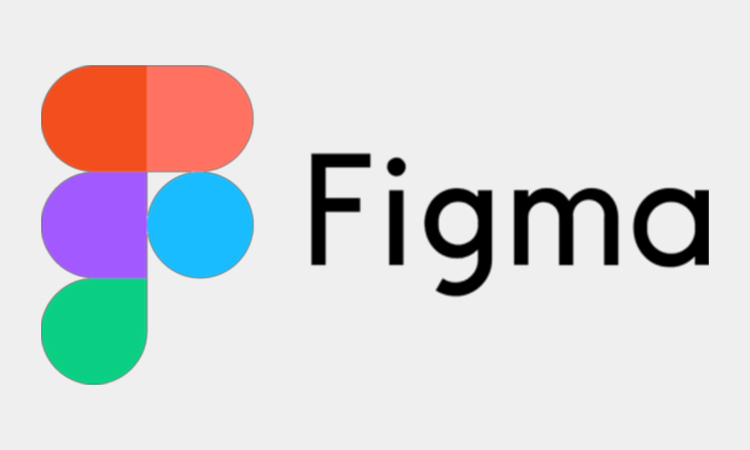
Figma is a collaborative interface design tool that plastic surgery practices can use to create web design prototypes. It can serve as a great platform for creating website design mockups for plastic surgery businesses of all sizes.
Special Features:
- Figma eases collaboration with real-time editing and cloud-based file sharing
- This platform supports design systems that improve consistency and scalability across projects
- Offers an abundance of themes and a community support area.
- Solid design prototyping with interaction and animation abilities.
- Accessibility-focused plugins that can help your team design for comprehensiveness, expanding audience reach, and usability.
- Sketch

Sketch is a vector-based design tool used by UX designers. This tool focuses on developing interactive web layouts and user interfaces. It allows plastic surgeons to create high-fidelity mockups, prototypes, and wireframes, offering features such as linked styles, symbols, and non-destructive editing for reusable elements.
Special Features:
- Vector editing capabilities that allow designers to craft intricate designs.
- A comprehensive plugin ecosystem
- Ability to integrate with various third-party tools and platforms.
- Lunacy

Lunacy is a convenient, affordable graphics design tool for web design and UI/UX, making it a great option for plastic surgeons who are just starting out. It offers AI-powered features, millions of built-in graphics, and supports real-time collaborations, allowing plastic surgery practices to design both online and offline.
Special Features:
- UI kits from Google, Apple, and Microsoft
- AI image editing abilities
- Multi-language and offline editing
- Marvel

Marvel is a web-based design and prototyping platform. Leveraging this tool can help plastic surgeons speed up their web design process, offering instant solutions to creating attractive designs and passing them onto the development stage.
Special Features:
- Codeless design wireframing and prototyping tool.
- A huge theme library and developer handoff functionality.
- User testing and collection of feedback.
Final Thoughts
After reading the entire blog, you must now have a clear idea of what web design is for plastic surgeons, why it matters, and how you can optimize your website with SEO. By following the above tips and tricks, plastic surgeons can create a professional and SEO-friendly website for their practice.
It allows plastic surgeons to achieve exceptional results in terms of engaging more potential clients and improving their rankings in the search engine results. In case you are just starting out and finding all of this a little too overwhelming, then you can perhaps partner with a web design expert.



























